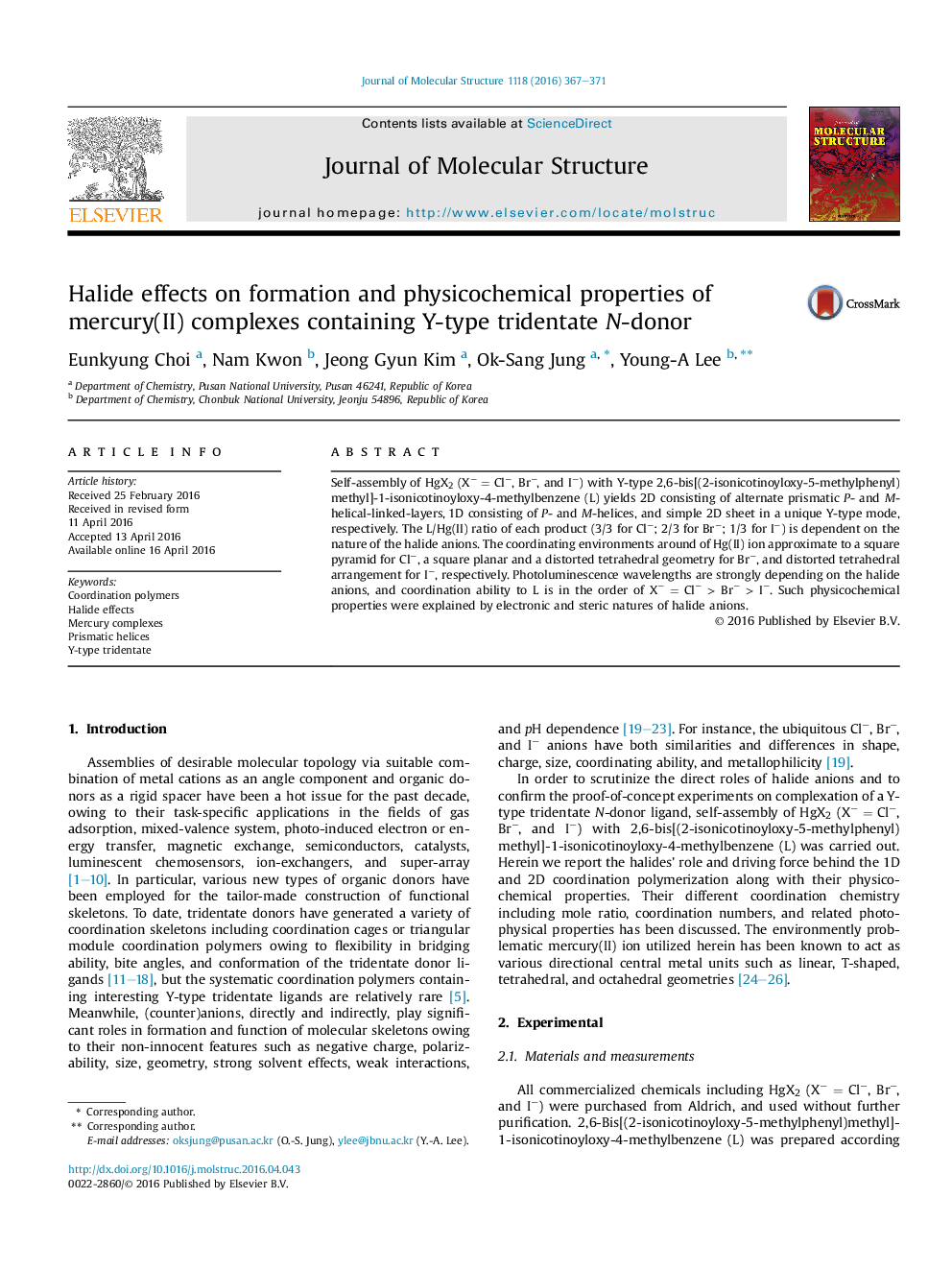| Article ID | Journal | Published Year | Pages | File Type |
|---|---|---|---|---|
| 1408829 | Journal of Molecular Structure | 2016 | 5 Pages |
•Self-assembly of HgX2 with Y-type tridentate ligand was carried out.•The reaction produced the halide anion-dependent coordination chemistry.•Their PL wavelengths and physicochemical properties pounds were depending on the nature of X.•The L/M ratio was inverse proportional to the size of halide anions.
Self-assembly of HgX2 (X− = Cl−, Br−, and I−) with Y-type 2,6-bis[(2-isonicotinoyloxy-5-methylphenyl)methyl]-1-isonicotinoyloxy-4-methylbenzene (L) yields 2D consisting of alternate prismatic P- and M-helical-linked-layers, 1D consisting of P- and M-helices, and simple 2D sheet in a unique Y-type mode, respectively. The L/Hg(II) ratio of each product (3/3 for Cl−; 2/3 for Br−; 1/3 for I−) is dependent on the nature of the halide anions. The coordinating environments around of Hg(II) ion approximate to a square pyramid for Cl−, a square planar and a distorted tetrahedral geometry for Br−, and distorted tetrahedral arrangement for I−, respectively. Photoluminescence wavelengths are strongly depending on the halide anions, and coordination ability to L is in the order of X− = Cl− > Br− > I−. Such physicochemical properties were explained by electronic and steric natures of halide anions.
Graphical abstractA series of HgX2 (X− = Cl−, Br−, I−) coordination compounds with Y-type tridentate 2,6-bis[(2-isonicotinoyloxy-5-methylphenyl)methyl]-1-isonicotinoyloxy-4-methylbenzene and their coordination chemistry dependent on the halide anions were investigated.Figure optionsDownload full-size imageDownload as PowerPoint slide
